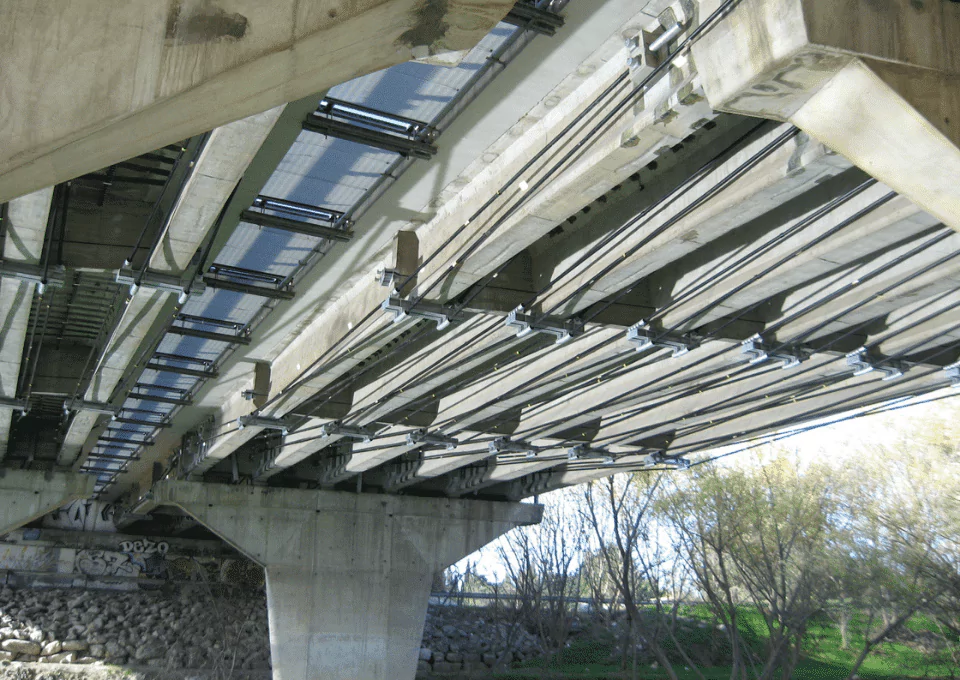Many prestressed concrete structures were built last century with an over-reliance on the durability of reinforced concrete and bonded post-tensioning techniques. These technologies were not then as mature as they are today, in terms of design, quality and care taken in tendons installation (mainly injection).
The first objective of a prestressed structure’s inspection is to assess the risk associated with the operation of the structure, by verifying in particular that the effects of the prestressing are still present and that the condition of the prestressing tendons is satisfactory to ensure the durability of the prestressing over time.
Nowadays, proven solutions for upgrading or modernising the external prestressing tendons exist, which allow a prestressed structure to be brought back to the original level of structural resistance and safety.
